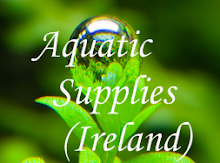  Most angelfish available in the hobby are the result of many decades of inter- breeding between the various species of Pterophyllum, especially P. scalare and P. leopoldi. The result of this is a domestic angelfish that is a hybrid, that has a resemblance to wild Pterophyllum species. Although most domestic angelfish resemble Pterophyllum scalare and are referred to as such, This is not the case they are a hybrid variety of the Pterophyllum species.  Pterophyllum scalare. The most well known species of angelfish is Pterophyllum scalare. Pterophyllum scalare's colour is silver with three brown vertical stripes. It is very peaceful although sometimes can be aggressive to smaller fish. They spawn on broad-leaved sword plants in the wild, But will also spawn almost any flat sloped surface in an aquarium, Its maximum size is around 12–15 cm in length, up to 20 cm in height. Angelfish prefer water with a 6.0–8.0 pH, with 6.5-7.4 being ideal, a water hardness of 5.0–13.0 dGH, and a temperature range of 24–30°C (75–86°F). Average lifespan in an aquarium is 10 years. Freshwater angelfish are piscivores, meaning that they eat other fish. But in an aquarium, angelfish become lazy and much prefer flake food rather than having to hunt live fish. They are safe to keep with other peaceful fish that are not too small. P.Altum Its has silver body colour but with three brownish/red vertical stripes and red striping patterns into the fins. The species may show red spotting when mature and when aroused exhibits a black operculum spot. Wild p.Altum is one of most difficult to breed in captivity, it can exceed 50 cm in height in the wild. but in aquariums, they have known to have grow to just over 40 cm. They prefer a pH range between 4.5 to 5.8. They come from very transparent blackwater with almost nil conductivity. Temperature range in these waters is between 26°C and 29°C. Unlike P. scalare which prefer to spawn on plants, P. altum prefers to spawn on submerged roots and tree branches. Only advanced aquarists should keep p.altum because of detailed maintenance it requires for proper health. Pterophyllum leopoldi The Pterophyllum leopoldi is a river dwelling angelfish that originates from rivers in the Amazon River basin. P. leopoldi can be differentiated from P. scalare because of it's more horizontally elongated body and the black band which goes through the fish's eye and goes straight over the head and joins up on the other side. P. leopoldi is very rarely seen in the hobby. Breeding Angel Fish P. scalare are easy to breed in the aquarium, But because of decades of inbreeding, Angelfish have almost completely lost their rearing instincts. This results in the parents eating their young. It is very difficult to identify the gender of any Angelfish until they almost ready to breed. Angelfish pairs form long-term relationships where each individual will protect the other from threats and potential suitors. Upon the death or removal of one of the mated pair, some breeders have experienced a total refusal of the other mate to pair up with any other angelfish; others have had more success with subsequent mates. Both parents care for the young. A pair of angels are capable of spawning every seven to ten days when eggs from a previous spawn have been removed. Spawning frequency will decrease and eventually cease after they are three years old. When the pair is ready to spawn, the pair will choose a spot upon which to lay the eggs and clean the surface of any dirt or algae. The spawning area will be a broad-leaf plant or a flat surface like a piece of slate placed vertically in the aquarium. The female will deposit a line of eggs on the spawning substrate, followed by the male who will fertilize the eggs. This process will repeat itself until there are a total of 100 to up to 1200+ eggs. The pair will take turns faning water over the eggs. Within days, the eggs will hatch and the fry will remain attached to the spawning substrate. After one week, The fry will become free swimming after they consume their yolk sacs. The fry can now be fed baby brine shrimp. |
(Amano Shrimp)
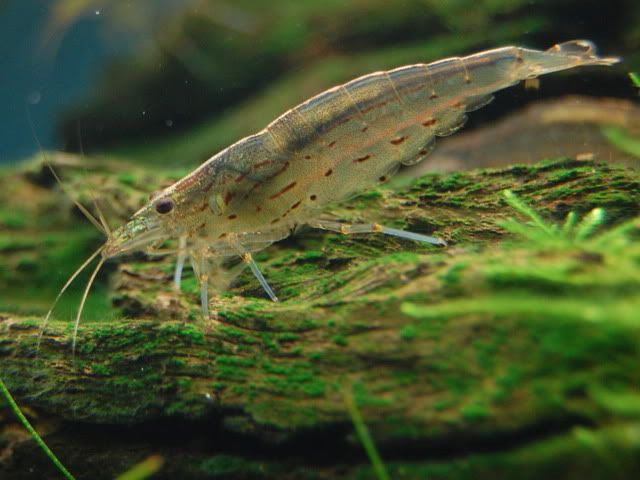 Caridina Japonica also known as Amano Shrimps or algae shrimps are freshwater shrimp said to have been introduced to aquarium keeping by the famous Japanese aquascaper Takashi Amano. These shrimp are found in the Yamato river area of Japan living amongst the algae which grow along the banks, particularly in the delta areas. Captive breeding of this species has been done but is difficult as in the wild the adults lay eggs which are washed in to more saline waters where the young hatch before beginning the journey upstream to restart the process, this means that to succeed in breeding, relative salinity must be achieved at each stage as well as correct hardness, temperature and PH.  The fish make an excellent addition to any aquaria that meet their parameters and does not contain any fish large enough to eat them. They really are fascinating to watch as they travel around the aquarium floor, constantly sorting debris and eating algae using their 4 feeding limbs, shovelling food into their mouths. If you do decide to add these to you aquarium beware that those on sale on eBay are usually very young and thus small when purchased so easily eaten by even relatively small fish. Check with the seller when purchasing and if you do go ahead and buy young specimens, set up a breeding net in which to feed and separate the new additions to the tank, do not try and use a floating breeding trap as they can be small enough to pass through the slats. They can also spend time out of the water so make sure that you cover the top of the container you use to house them and that you have a tight fitting hood on the tank. The shrimp will prefer the following parameters; Temp: 18 - 27oC ideally 24oC Hardness: 6-10 dGh PH: 6.1 - 7.1 Adult Size: 5CM Feeding; Algae based sinking Feeds, supplement with fresh veg i.e. weighed down cucumber, blanched spinach etc. Flake If kept well these little shrimp are fascinating and well worthy addition to the aquarium, try to keep in groups of 5 or more if possible and never use any copper based medicines. |
(Golden gourami)
The beautiful color of the Gold Gourami makes this a very desirable addition to an aquarium, but it does get big and can become belligerent to small tank mates!  Care: Keep them in a 80 cm tank minimum, the fish are extremely hardy and will tolerate virtually every environment. Temperatures in the middle to higher regions. The fish are somewhat aggressive, and shouldn't be kept with small or quiet fish. For the same reason only a single male in smaller tanks. Trichogaster trichopterus should only be bought when young. Older fish get so accustomed to their surroundings, that they will turn shy if moved to another tank.Larger fish pollute a lot, decent filtration is necessary. Size:Up to 15 cm maximum, but most fish in nature are around 11 cm. In aquariums they rarely exceed 9-10cm. The Gold Gourami, like the Blue Gourami, Platinum Gourami, and Opaline Gourami, is a color morph of the Three-spot Gourami and is therefore very similar. The difference in the Gold Gourami is the lack of the three spots and the gold coloration. The Gold Gourami, like all the variants of this species, are generally considered good community fish when small but they are not as peaceful as the other gouramis. They have been known to attack smaller fish. They can also get belligerent or territorial when they get large. Because they can get quite large, about 6 inches, they will soon out grow a small aquarium and will need to be provided with more space. This species group is certainly one of the hardiest available to the aquarist, and makes an excellent first fish for people entering the hobby. They are long lived fish with each having a remarkably individual personality. They will use their pelvic fins to feel their environment and even feel their tank mates. They also seem to be quite aware of their owners. |
(Otto)
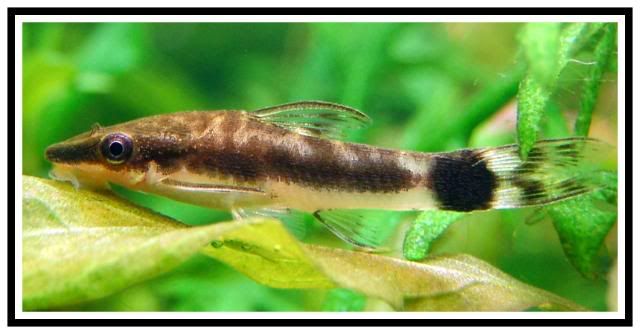 Eggs are laid on the leaves of plants and hatch in about 3 days. Provide plenty of algae, green food and tiny particulate foods, such as the liquid suspension types, for the fry.  Otocinclus Catfish are the ideal algae eater for small to medium sized tanks. They may, however, be difficult to acclimatise initially, and efficient filtration is essential. They are frequently reported to die for no apparent reason after adding to a new tank. Like many catfish, they are generally far more active at night. This particular species of Otocinclus is not often imported. |
(neon tetra)
 The Neon Tetra is an extremely popular aquarium fish. It is sturdy and inexpensive and is often one of the first fish species purchased by beginner aquarists. A shoal of brightly decorated Neon Tetras will add colour as well as activity to the aquarium. Since the Neon Tetras stay quite small and have a peaceful temperament, they are often found in small community aquariums. The Neon Tetra is a pelagic freshwater fish native to tropical parts of northern South America. The Neon tetra originates from westerns Brazil, south-eastern Colombia and eastern Peru and wild Neon Tetras can be found in the headwaters of the River Amazon, Tiger, Napo and Yarapa. It is present in both blackwater and clearwater stream tributaries. You can however not find Neon tetras in the whitewater rivers that run from the Andes. The Neon Tetras have bright colours and an iridescent stripe in order to be visible in dark blackwaters. The South American blackwater and clearwater streams and rivers have very soft and somewhat acidic water. The flow through tropical regions and the water temperature stays around 20 – 26° C (), sometimes higher. The commercial bred Neon Tetras have often been adapted to conditions that are very different from those found in their native habitat. Today, an introduced population of Neon Tetra is established in Singapore. Neon Tetras are susceptible to the Neon Tetra disease. There is still no available cure for this disease and it will often kill the fish. Neon Tetra disease is caused by a sporozoan named Pleistophora hyphessobryconis. The disease is therefore also known as “Pleistophora”. During the initial stage of Neon Tetra disease, parasite spores enter the Neon tetra. Common symptoms include restlessness and dull colouration. As the disease proceeds, cyst will develop and the fish body can become lumpy. The Neon Tetra will often have trouble swimming and towards the final stages of the disease the spine can become curved. The weakened fish is also susceptible to secondary infections. As mentioned above, these is still no cure for Neon Tetra disease and trying to prevent the parasite from entering your aquarium in the first place is therefore the best course of action. The parasite is typically introduced via live food or newly purchased fish. By cultivating your own live food you will gain a greater control over what you put in your aquarium. Brine shrimp is for instance very easy and hassle-free to cultivate at home. When you purchase new fish, you should ideally keep them quarantined in a separate aquarium and look out for signs of illness. In the aquarium, fish often catch the disease when they eat dead fish. Removing sick and dead fish as soon as possible is therefore important. Some aquarists report that using a diatom filter decreases the risk of Neon Tetra disease, but it is only a supplement, not a substitute for the precautions described above. A diatom filter can reduce the amount of free parasites in the water. There is also a disease known as “false Neon Tetra disease” that is often confused with true Neon Tetra disease. This disease is not caused by a sporozoan; it is caused by bacteria. The symptoms are however very similar and unless you have access to a laboratory it will be virtually impossible for you to tell the difference between the two diseases. |
(golden plec,sunshine plec)
  Identification : Striking sub-adult colouration which diminishes in adults which are still quite distinctive. Commonly known as the goldie or sunshine pleco, this ultimately larger fish is a frequent import. Sexing: Males grow larger than females. Males develop a more ''bristled'' appearance that, in certain light, can shine from the light being reflected off the fish. The leading edge of the leading pectoral fin ray also becomes slightly spiny in mature males. Other information: Clean, clear, highly oxygenated, preferably with a noticeable current although this is not vital. |
(Zebra danio)
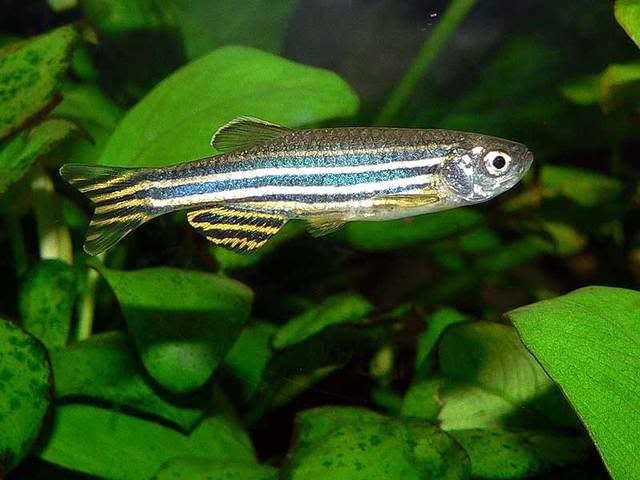 Diet: In the wild, they can be micropredators, they eat small crustaceans, insects, and little worms. They do eat vegetation, and the presence of fine-leaved plants may take care of their need for roughage. High-quality flake and pelletized foods will also contain the right mix of nutrients to keep these fish thriving. Like almost all other fishes, they will be quite happy with the addition of live foods to their diet. They are often used as mosquito control in temperate ponds but they should be brought in for the fall if such is the temperature routinely falls below 64 degrees Fahrenheit in the winter. Water Temperature: In the aquarium, they can regularly withstand temperatures between 64 and 79 degrees Fahrenheit. This can actually qualify them as coolwater fish in that they can easily handle room temperature. Water Chemistry: These can survive a range of water qualities. In the wild, they live in waters with pH between 6 and 8 and dH between 5 and 19. Almost any tap water (once dechlorinated and dechloraminated) will suffice but acclimation processes should be used if your water's pH or hardness lie outside the given ranges or differ greatly from that in which they were kept at the LFS. They do best with planted tanks (filled with open swimming spaces). 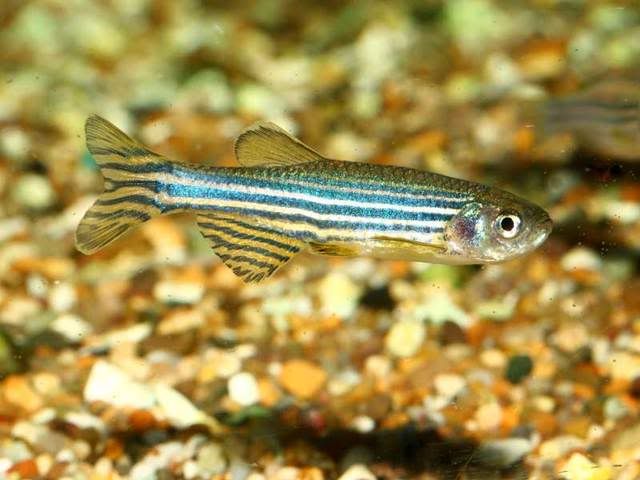 Sexing: In mature specimens, the males are much slimmer than the females. If comparing two wild-type D. rerio of opposite sexes, the background will be more golden on a male and a paler yellow on a female. Breeding: These are reputedly among the easiest egg-layers to breed, perhaps easier than the White Cloud Mountain Minnow (Tanichthys albonubes) and the Convict Cichlid (Archocentrus nigrofasciatus). Depending on your view, you may choose to use mated "pairs" or you may choose to condition all of them and merely pick a female and a male. Merely heating the water to a temperature in the mid to upper 70s Fahrenheit and oxygenating it somewhat will likely trigger a spawning response. (this is supposed to simulate a rainy season and the unification of their stagnant pools to the rivers of the area.) Another aspect of breeding D. rerio which has multiple schools is the adornment of the spawning tank. Some recommend a heavily-planted display tank and just allowing the young to grow up along side their parents in single-species tanks. Floating plants may be used in such a tank and then removed to a separate incubatory tank. Others recommend layering the bottom of the spawning tank with marbles so that, once-scattered, eggs will not take on the role of sustainence for the hungry parents. The fry can then grow unmolested in the rearing tank once the parents have been removed. Description: Among the fish to have a large impact in the hobby, D. rerio is surprisingly only 2-1/4" long at a maximum. These are torpedo-shaped, streamlined little fishes that are built for speed. They have a yellow background upon which (usually five) horizontal royal blue stripes that span the length of the fish are placed. Their fins are correspondingly striped, but more brilliantly so. Interestingly enough, many aquarists do not recognize the feature which makes them a "barb" (according to Elson and Lucanus in The Barbs Aquarium); they have two pairs of barbels which are often overlooked.  Behaviour: These are reputedly fin-nippers but only anecdotally so. They are boisterous, so they should not be kept with slow-moving, easily-annoyed and large-finned counterparts. They swim very quickly, and manifest a fright coloration that is very dull when their environment has been changed rapidly and in an unfavorable manner. They are quick to evade a predator, net, or something else that may scare them. Anyone who's ever kept a tank of these will confirm their prowess at evasion. They should be kept in a group of their own species as this will help to make them feel more comfortable. They really are social fish, so taking away the society of conspecifics is not recommended nor is it a "humane" way to keep them. They will occupy any of the levels of the aquarium, so plan their tanks accordingly. Ease of keeping: Excellent beginners fish, hardy, fun and colourful, makes an excellent addition to any planted peaceful aquarium. |
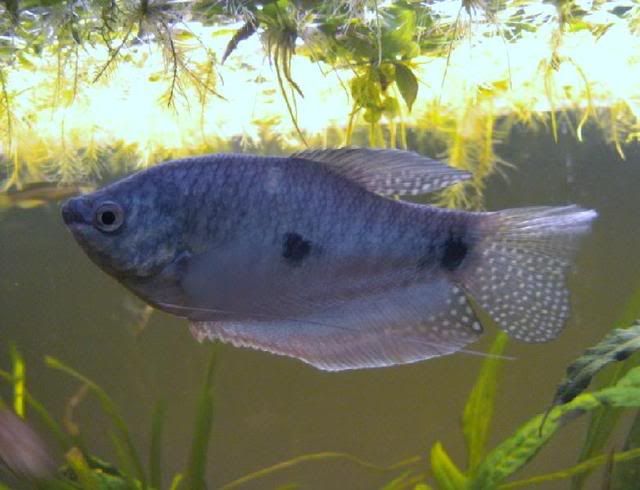 The name, Three-spot Gourami, at first seems a bit of a mystery. This fish actually only has two spots, the third spot is generally considered to be the eye! These are a beautiful fish that get quite large, about 6 inches. The Blue Gourami, like the Gold Gourami, Platinum Gourami, and Opaline Gourami, is a color-morph of the Three-spot Gourami. The Blue Gourami and the Three-spot Gourami are identical except that the Blue Gourami has a hazy, whitish-blue coat. The Three-spot Gourami, like all the variants of this species, are generally considered good community fish when small but they are not as peaceful as the other gouramis. They have been known to attack smaller fish. They can also get belligerent or territorial when they get large. 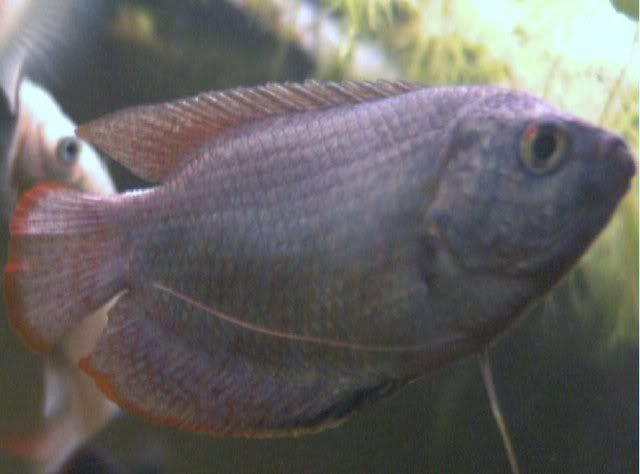 This species group is certainly one of the hardiest available to the aquarist, and makes an excellent first fish for people entering the hobby. They are long lived fish with each having a remarkably individual personality. They will use their pelvic fins to feel their environment and even feel their tank mates. They also seem to be quite aware of their owners. |
  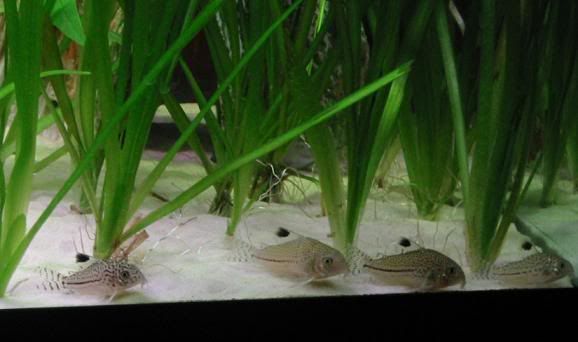 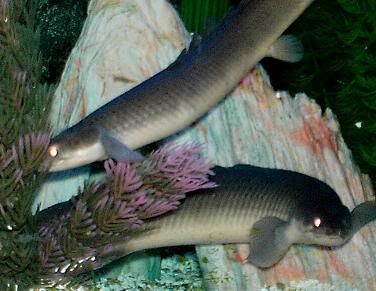 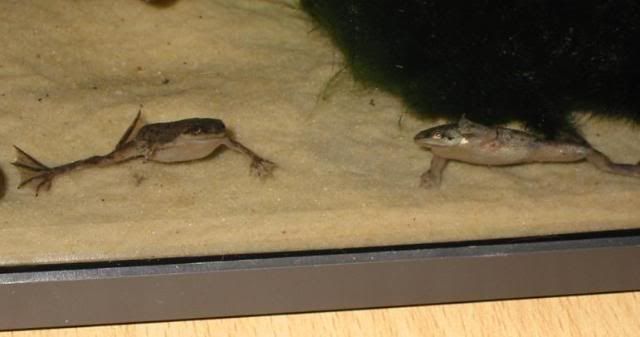 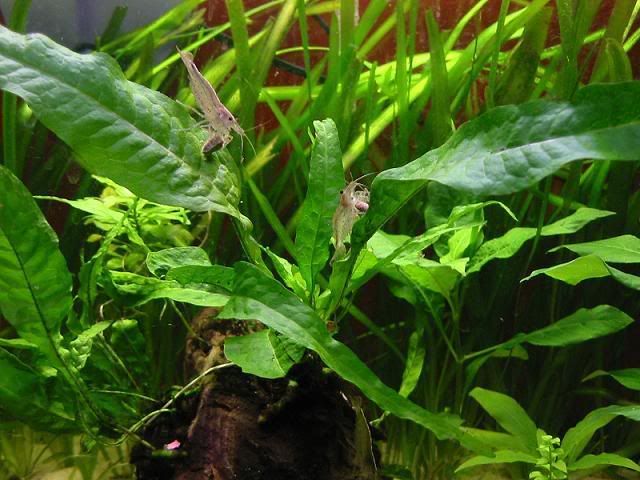 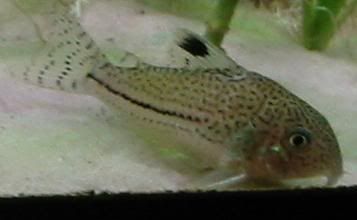 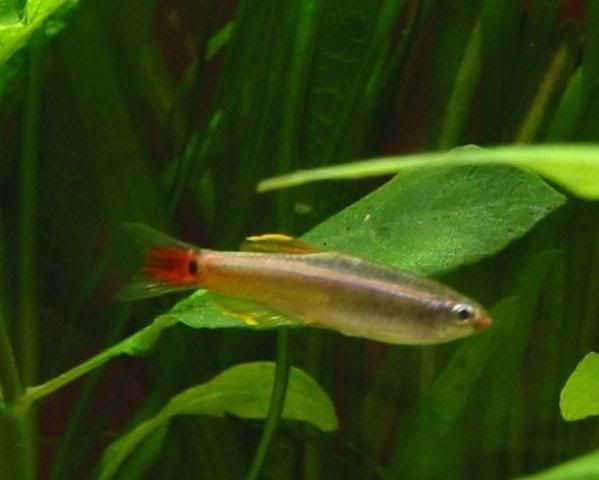 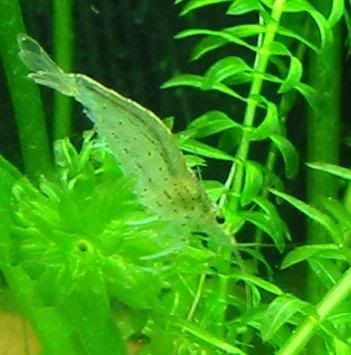 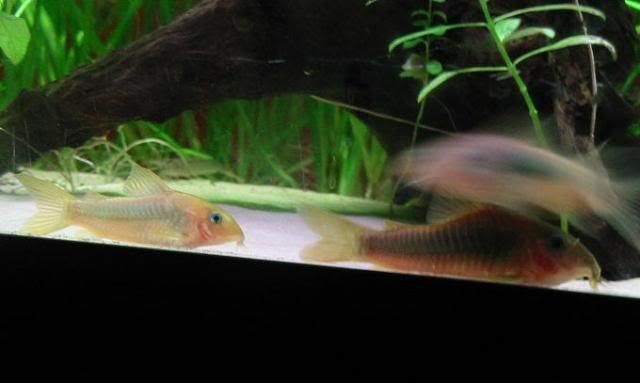 |

